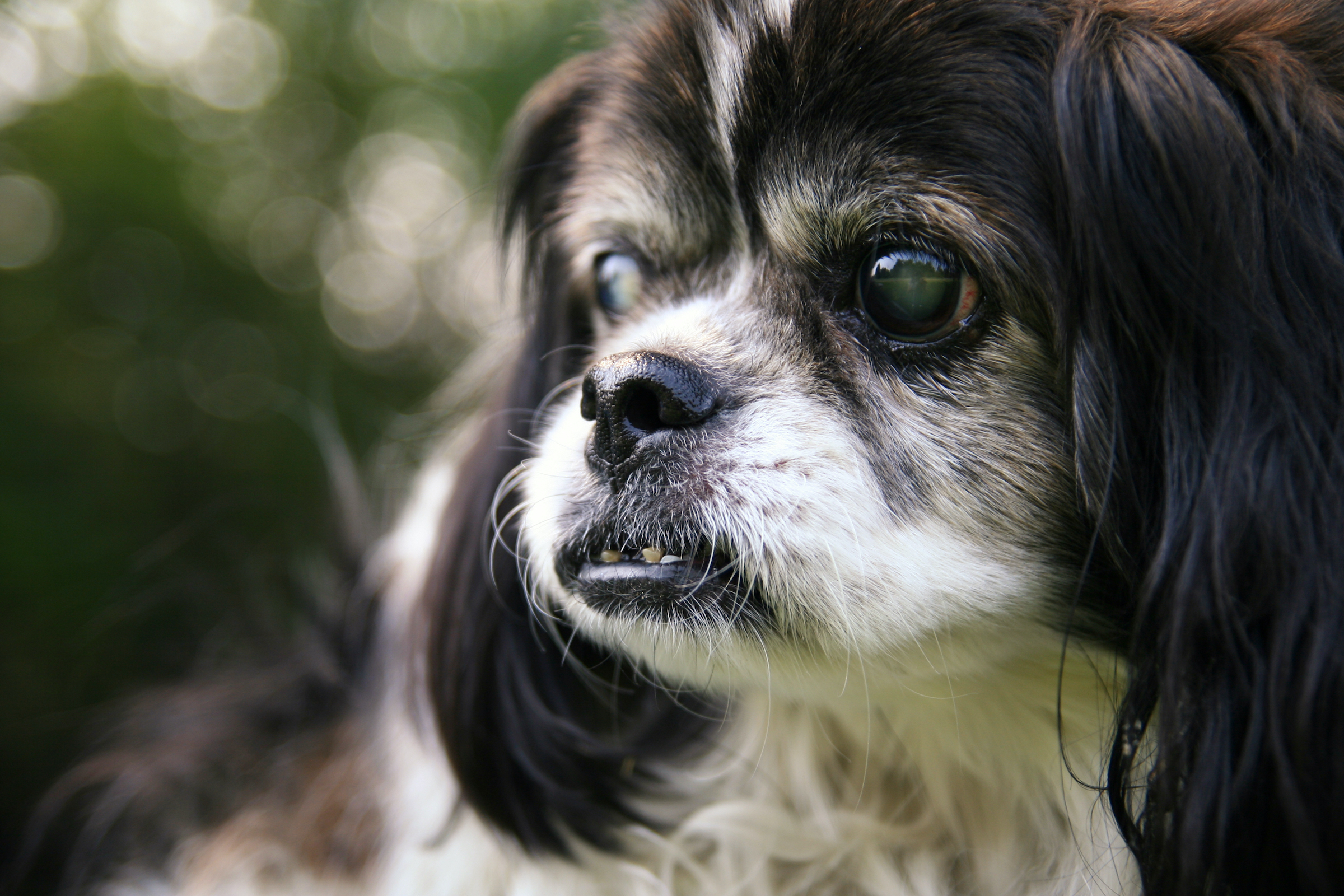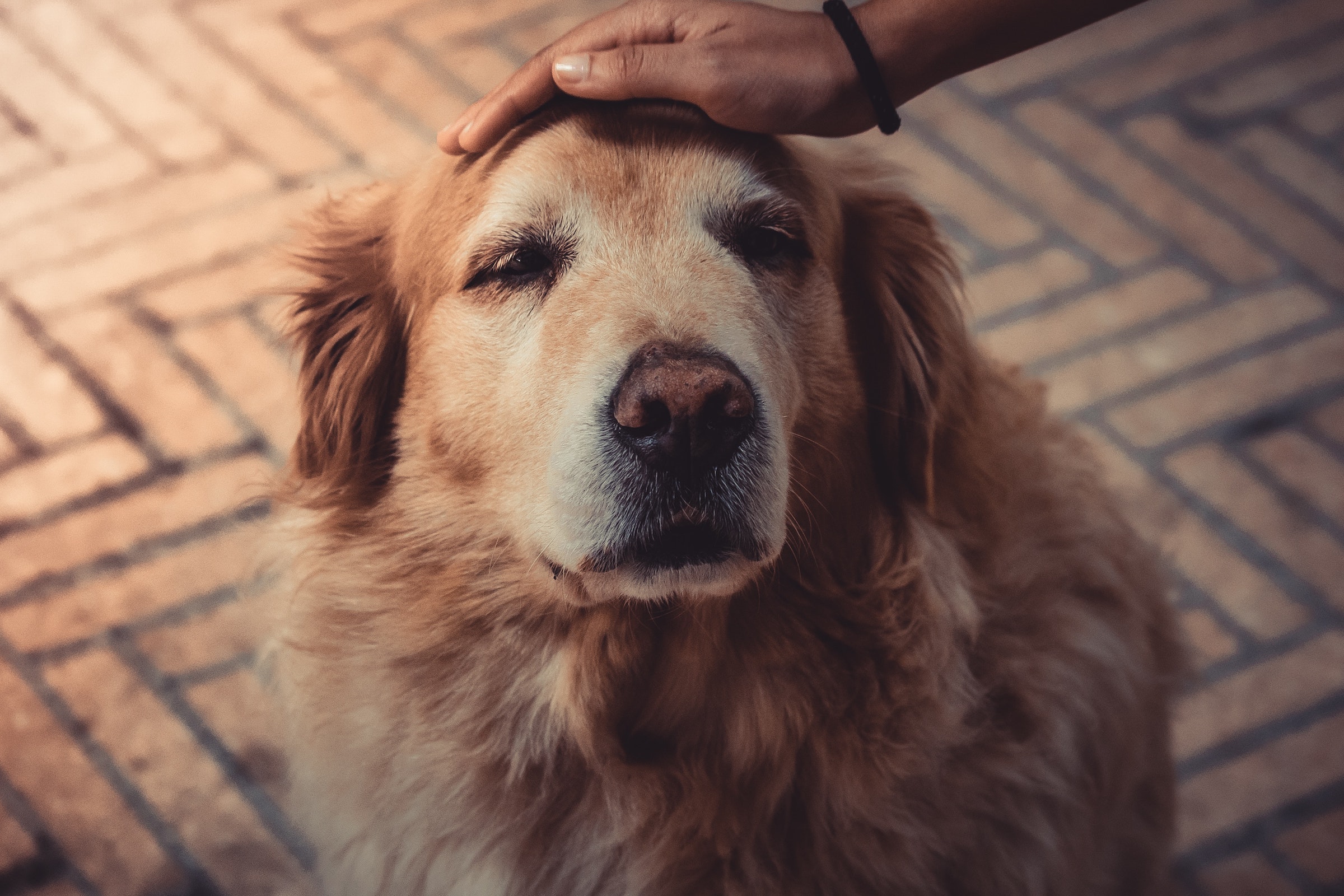Dogs are a diverse and resilient species, even when it comes to ability. Whether they are missing a limb, are hard of hearing, or cannot see, most pups are just as happy to play, run, cuddle, and eat.
Even though blind dogs are the same happy-go-lucky bundles of love as dogs with sight, the way they learn might look a little different. Blind-dog training, for example, relies more on consistency and using their other senses. Don’t worry — you and your fur baby will be just fine if you can approach his care slightly differently. Whether you’re bringing home a new friend or adjusting to a change, these blind-dog tips and tricks are sure to come in handy.

How is life different for a blind dog?
Although blind dogs will navigate their daily routines differently from a seeing pup, they can live equally long and happy lives. Many dogs who are born without sight don’t even know that they’re different! Still, there’s a lot to learn, and it may take some time before they’re able to memorize the layout of their home and find other strategies to get around with ease. Be extra patient if your pup is still learning.
It’s important to take baby steps when introducing anything or anyplace new to your sightless pet. But because blind dogs rely more heavily on their other senses to get around, you can do a few things to make your home even more accommodating for your four-legged friend.
How can owners help make a blind dog’s life easier?
Since blind pups rely so much on their senses of smell, hearing, and touch, it’s important to keep their environment consistent. Veterinary vision expert Caroline Levin explains via the Humane Society of the United States that puppy-proofing your home is a must, as is never moving your furniture. Once your dog creates a mental map of your home, he’ll be able to get around with ease — but something as simple as a bag on the floor can confuse him.

Blind-dog training tips
1. Remember to go slow
Remember to introduce your dog to small spaces to start, letting him build up confidence as he goes. Since blind dogs can be more vulnerable than their seeing peers, working with their comfort level is of extra importance.
2. Use your blind dog’s other senses
Since your dog can’t use his eyes, take advantage of his other senses — sound, touch, and smell specifically. Simple reminders such as dog-safe essential oils in places your pup visits often can go a long way in helping him map his environment. For example, Levin uses vanilla essential oil near all doors and lavender near pet beds. She also places tactile mats of different textures to help her blind dog know where she is simply by the touch of her paw. Sound cues such as bells on other house pets or even an open window can enrich your pup’s environment immensely.
3. Use a small space for training
Although your main concern should be your pet’s safety, there are many reasons why having a small training space will help. Once all stairs, sharp corners, and other possible dangers are blocked off (or puppy-proofed), your dog will be able to explore and memorize his new space with confidence. This healthy state of mind will do wonders with training and motivation — for you and your pet!
A small area will also reduce the number of distractions for your pup, so training will always come first. You can’t necessarily make sounds or smells go away, especially since dogs have much stronger senses than we do, but once they’ve explored their small area, they’re bound to run out of novelties eventually.
4. Try clicker training for blind dogs
Using a clicker for sound cues during training is super effective for sighted dogs, but it can be an essential piece of the equation for blind pets. To try clicker training for blind dogs, all you need are treats, patience, and a clicker, of course. When your dog completes a desired behavior, immediately click the clicker, praise your pup, and reward him with a snack. As simple as it sounds, it can take some time to get this technique down; be patient and take baby steps until you’re feeling comfortable. There’s no rush!
5. Teach commands to help your blind dog navigate
Once you and your dog start to get the hang of training, a few specific commands will come in handy. Teaching your pup an action like “watch” can warn him to anticipate an incoming obstacle, while something like “step” lets him know of an elevation change ahead.
Whether your dog was born without sight or lost his vision later on, he can have a long and happy life. The biggest factor in his well-being is you and your TLC, so make sure to give him all the patience and encouragement he needs. Before you know it, your little fur baby will be running around your home like nobody’s business! But he’ll know when to stop for a treat, of course.



